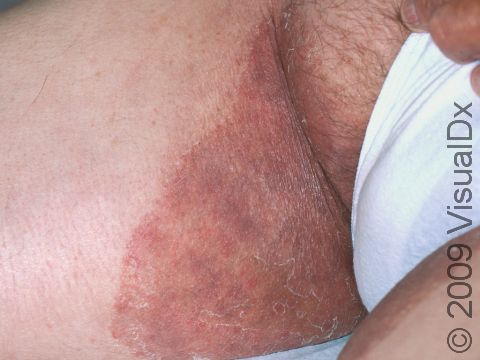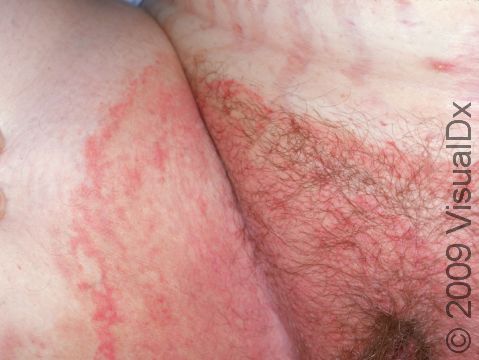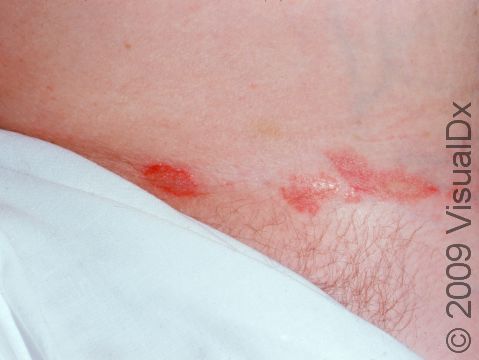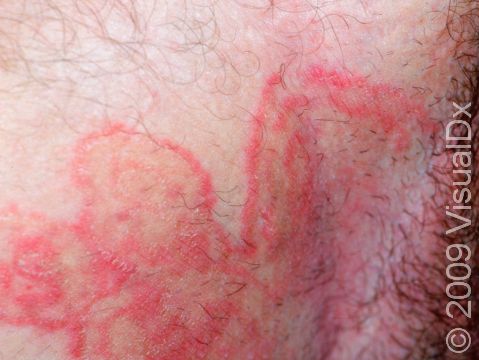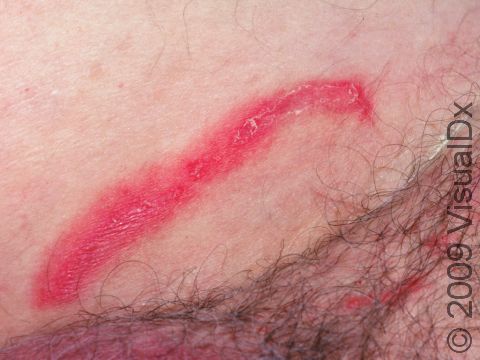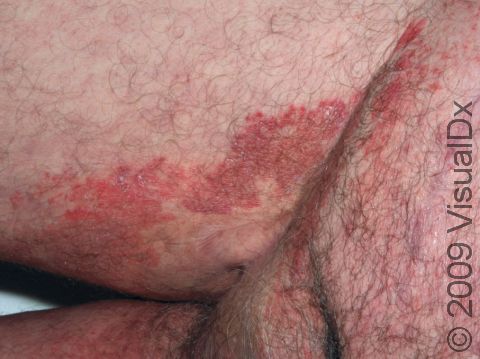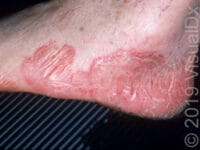
Jock Itch (Tinea Cruris)
Jock itch (tinea cruris) is a surface (superficial) fungal infection of the skin on either side of the body where the thigh joins the abdomen, known as the groin. It is often spread to the groin from tinea infection on the feet (tinea pedis or athlete’s feet).
Who's At Risk?
Jock itch is very common around the world and is more of a problem in warm, moist regions, as the fungus thrives in these conditions.
People who wear tight clothing for extended periods, share clothing, participate in athletics, or are overweight or diabetic are more often affected with jock itch. It is common in adult men.
Signs & Symptoms
Large round, red patches with bumpy, scaling edges occur in the groin and may extend down the inner thigh or onto the belly or buttocks areas. Jock itch is usually not present on the genitals. It is usually very itchy.
Self-Care Guidelines
Check your feet and treat athlete’s foot if it is present, as it can often spread from there.
Over-the-counter antifungal creams such as miconazole (eg, Monistat®), clotrimazole (Lotrimin®), or tolnaftate (Tinactin®) are very effective. Apply it twice a day until a few days after the rash seems to be gone, which usually takes about 2–3 weeks. You may still see flat, brown areas of discoloration for several weeks, but these do not need to be treated as long as there is no longer itching or bumps and scales in the area.
Reinfection can be prevented. Keep the area cool and dry by drying the body thoroughly after bathing and wearing loose cotton clothing. Wash your clothing and linens in hot water. If you think you also have athlete’s foot, use a separate towel for your feet and try to keep your feet dry as well, by avoiding wearing shoes for long periods or wearing loose-fitting shoes. Clean your bath/shower with bleach and floors with an appropriate cleaner to kill any fungal spores. You should also avoid sharing clothing and wear footwear in public bathrooms/showers and gyms. Skin folds can be a continually moist environment that aids growth of this fungus. If this is a recurrent problem for you, it may help to lose weight.
Treatments
Your doctor may do a scraping to look for fungus under the microscope or a biopsy if your diagnosis is uncertain.
Antifungal creams or pills may be prescribed.
Visit Urgency
If you see no improvement after 2 weeks of self-care, see your doctor.
Trusted Links
References
Bolognia, Jean L., ed. Dermatology, pp.1174-1185. New York: Mosby, 2003.
Freedberg, Irwin M., ed. Fitzpatrick’s Dermatology in General Medicine. 6th ed. pp.1999, 1102. New York: McGraw-Hill, 2003.
Last modified on October 11th, 2022 at 2:45 pm

Not sure what to look for?
Try our new Rash and Skin Condition Finder
